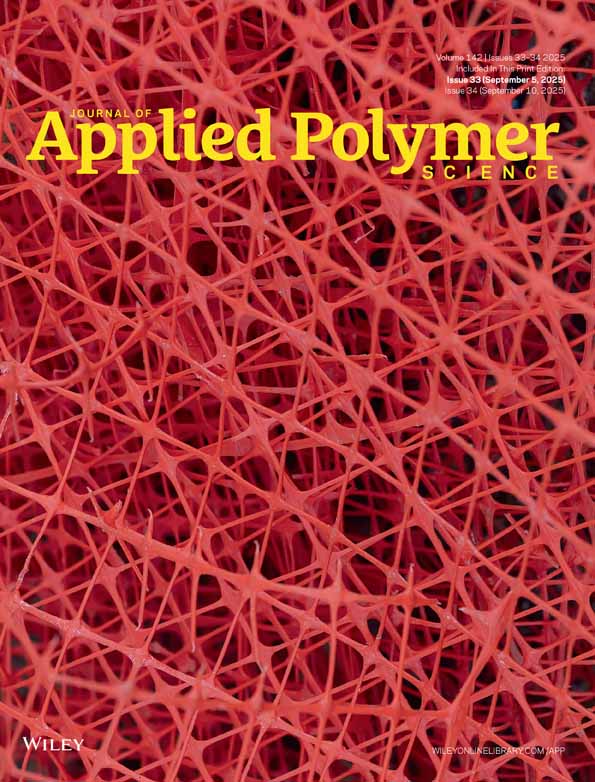Hydrophilic property of polyester fabric coated with polyethylene glycolated bisphenol A
Abstract
Polyethylene glycolated bisphenol A (PEGBPA), a hydrophilic–hydrophobic compound, was synthesized and applied onto polyester fabric using a pad-dry-cure method to impart a durable hydrophilic property. After coating and heat fixation, the treated fabrics were evaluated for wettability by measurement of the net moisture regain and wicking distance, and their surfaces were characterized by SEM and ATR/FTIR spectroscopy. The durability of the treated fabrics were tested by ten standard repeat washings and samples were characterized for their wettability after each wash. The surface properties of the fabric changed from hydrophobic to hydrophilic after heat treatment with the coating agent PEGBPA. Using the degree of increased moisture regain and wicking distance of the treated fabrics as a guide, optimal treatment was attained by coating with 10–20 g/L PEGBPA followed by 160–180°C heat treatment for 3 min. Wash fastness evaluations, coupled with SEM and ATR/FTIR analyses, showed that PEGBPA exhibited good adhesion onto the PET surface and was capable of withstanding repeated washings. It was concluded that the coating adhesion solely depended on physical aspects, such as hydrophobic–hydrophobic interactions between the bisphenol A segment of PEGBPA and the PET aromatic segment. © 2009 Wiley Periodicals, Inc. J Appl Polym Sci, 2010




